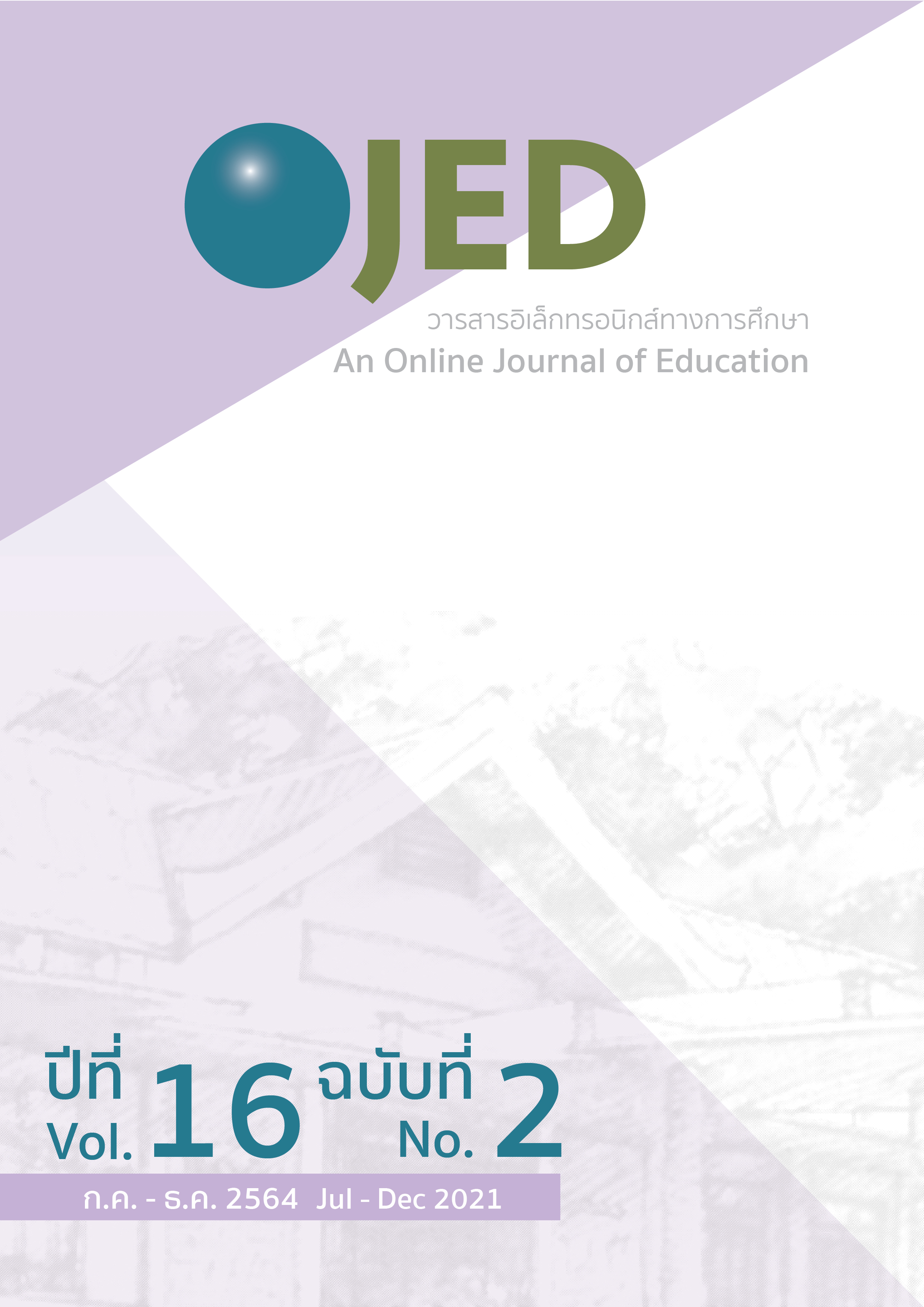Models of Dual Language Classroom Instruction a Case of Sarasas Affilitaed Schools
DOI:
https://doi.org/10.14456/ojed.2021.71Keywords:
dual language instruction, native English-speaking teachersAbstract
The study aimed to 1) explore the models of dual language classroom instruction implemented in Thailand, 2) differentiate the instructional principles used by native English-speaking teachers and non-native English-speaking teachers in dual language classroom instruction, and 3) investigate the opinions of students and teachers toward the dual language instruction in Sarasas Affiliated Schools. There are 4 school administrators, 106 elementary level foreign teachers, and 712 students in grade six in the study. The instruments for this study were three different semi-structures interview forms for school administrators, teachers and students; two questionnaires for teachers and students; and one classroom observation form. The quantitative data was analyzed using descriptive statistics; the qualitative data was analyzed using content analysis. The finding of the study revealed that Thailand have three models of dual language education, while Sarasas Affiliated Schools belong to Foreign Language Immersion Program. The instructional principles used by native English-speaking teachers and non-native English-speaking teachers are quite different. The dual language instructional programmes are effective according to the opinions from students and teachers in Sarasas Affiliated Schools.
References
Chongkittavorn, K. (2014, January 13). Is Thailand ready for Asean economic community, The nation.
Cloud, N., Genesee, F., & Hamayan, E. V. (2000). Dual language instruction: A handbook for enriched education. Heinle & Heinle.
Cooperation, B. o. I. (2008). Towards a learning society in Thailand: An introcuction to education in Thailand. (n.p.)
Cromwell, S. (1998). The roots of blingual education. Language recognition and language families. http://gc2000.rutgers.edu/GC2000/MODULES/WORLD_LANG/LessonPlan3.htm
Crystal, D. (2003). English as a global language. Cambridge University Press.
Education, M. o. (2008). Basic language curriculum B.E. 2551 (A.D. 2008). The express transportation of organization of Thailand.
Johnson, R. K., & Swain, M. (1997). Immersion education: International perspectives. Cambridge University Press.
Kachru, B. B. (1985). World Englishes and applied linguistics. World Englishes, 9(1), 3-20. doi: 10.1111/j.1467-971X.1990.tb00683.x
Post, B. (2007). International and bilingual schools in Thailand: Information analysis opportunities trends directory. Thansettakij Newspaper.
School, S. A. (2015). Sarasas Today. Sarasas Affiliated Schools.
School, S. E. (2014). Bilingual Education Baeb Thai. Sarasas Ektra School.
School, W. C. (2016). Dual Language. http://lang.woodstockschools.org/dual-language-program
Start(OHS), O. o. H. (2009). Dual language learning: What does it take? head start dual language report. (n.p.)
Tichuen, D. S. (2003). Country report: ACCU-APPEAL joint planning meeting on regional NFE programmes in Asia and the Pacific. http://www.accu.or.jp/litdbase/pub/pdf_cr05/03DB_Thailand.pdf
Downloads
Published
How to Cite
Issue
Section
License

This work is licensed under a Creative Commons Attribution-NonCommercial-NoDerivatives 4.0 International License.




